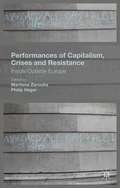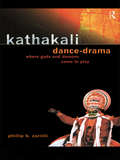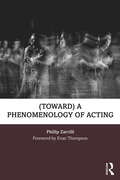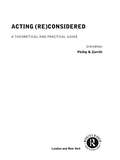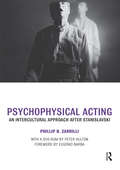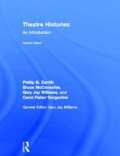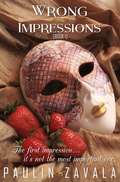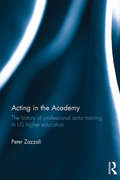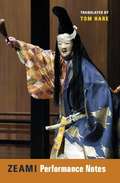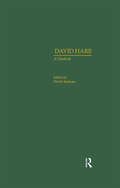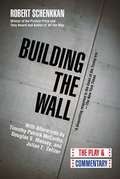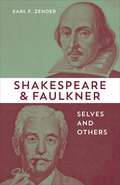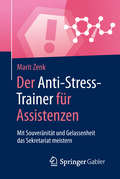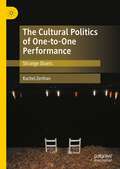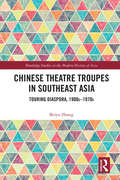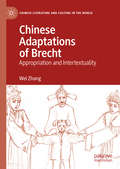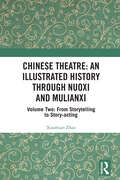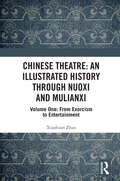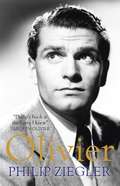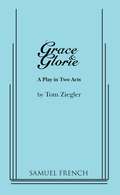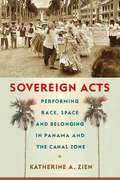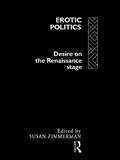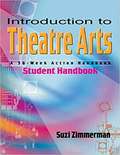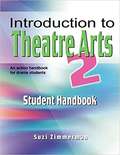- Table View
- List View
Performances of Capitalism, Crises and Resistance
by Marilena Zaroulia Philip HagerThis engaging study examines the issue of crisis in European performance since the collapse of global financial markets in 2008. The book's chapters examine diverse performances of crisis primarily in three cities with a loaded past and present for Europe, as idea and geopolitical reality: London, Athens and Berlin. Presenting a range of work – from the National Theatre's repertoire to alternative forms of theatre-making in 'other' spaces; from the Occupy LSX to cultural performance and 'invisible', quotidian performances – Performances of Capitalism, Crises and Resistance presents new approaches to performance as a form 'in crisis' and as reflecting the in-crisis permutation of the 'inside/outside' dichotomy, fundamental in the conception of Europe and the EU. In doing so, this book makes an argument for performance within and against neoliberal promises; as a monolithic factor implicated in the machinery of capitalism or multiple, emergent bodies of resistance.
Kathakali Dance-Drama: Where Gods and Demons Come to Play
by Phillip ZarrilliKathakali Dance-Drama provides a comprehensive introduction to the distinctive and colourful dance-drama of Kerala in South-West India for the first time. This landmark volume: * explores Kathakali's reception as it reaches new audiences both in India and the west * includes two cases of controversial of Kathakali experiments * explores the implications for Kathakali of Keralan politics During these performances heroes, heroines, gods and demons tell their stories of traditional Indian epics. The four Kathakali plays included in this anthology, translated from actual performances into English are: * The Flower of Good Fortune * The Killing of Kirmmira * The Progeny of Krishna * King Rugmamgada's Law Each play has an introduction and detailed commentary and is illustrated by stunning photographs taken during performances. An introduction to Kathakali stage conventions, make-up, music, acting, and training is also provided, making this an ideal volume for both the specialist and non-specialist reader.
(toward) a phenomenology of acting
by Phillip ZarrilliIn (toward) a phenomenology of acting, Phillip Zarrilli considers acting as a ‘question’ to be explored in the studio and then reflected upon. This book is a vital response to Jerzy Grotowski’s essential question: "How does the actor ‘touch that which is untouchable?’" Phenomenology invites us to listen to "the things themselves", to be attentive to how we sensorially, kinesthetically, and affectively engage with acting as a phenomenon and process. Using detailed first-person accounts of acting across a variety of dramaturgies and performances from Beckett to newly co-created performances to realism, it provides an account of how we ‘do’ or practice phenomenology when training, performing, directing, or teaching. Zarrilli brings a wealth of international and intercultural experience as a director, performer, and teacher to this major new contribution both to the practices of acting and to how we can reflect in depth on those practices. An advanced study for actors, directors, and teachers of acting that is ideal for both the training/rehearsal studio and research, (toward) a phenomenology of acting is an exciting move forward in the philosophical understanding of acting as an embodied practice.
Acting (Re)Considered (Re)Considered: A Theoretical and Practical Guide
by Phillip B. ZarrilliActing (Re)Considered is an exceptionally wide-ranging collection of theories on acting, ideas about body and training, and statements about the actor in performance. This second edition includes five new essays and has been fully revised and updated, with discussions by or about major figures who have shaped theories and practices of acting and performance from the late nineteenth century to the present.The essays - by directors, historians, actor trainers and actors - bridge the gap between theories and practices of acting, and between East and West. No other book provides such a wealth of primary and secondary sources, bibliographic material, and diversity of approaches. It includes discussions of such key topics as:* how we think and talk about acting* acting and emotion* the actor's psychophysical process* the body and training* the actor in performance* non-Western and cross-cultural paradigms of the body, training and acting.Acting (Re)Considered is vital reading for all those interested in performance.
Psychophysical Acting: An Intercultural Approach after Stanislavski
by Phillip B. ZarrilliPsychophysical Acting is a direct and vital address to the demands of contemporary theatre on today’s actor. Drawing on over thirty years of intercultural experience, Phillip Zarrilli aims to equip actors with practical and conceptual tools with which to approach their work. Areas of focus include:an historical overview of a psychophysical approach to acting from Stanislavski to the presentacting as an ‘energetics’ of performance, applied to a wide range of playwrights: Samuel Beckett, Martin Crimp, Sarah Kane, Kaite O’Reilly and Ota Shogoa system of training though yoga and Asian martial arts that heightens sensory awareness, dynamic energy, and in which body and mind become onepractical application of training principles to improvisation exercises.Psychophysical Acting is accompanied by Peter Hulton’s downloadable resources featuring exercises, production documentation, interviews, and reflection.
Theatre Histories: An Introduction (2nd edition)
by Phillip B. Zarrilli Bruce A. Mcconachie Carol Fisher Sorgenfrei Gary Jay WilliamsThis new edition of the innovative and widely acclaimed Theatre Histories: An Introduction offers overviews of theatre and drama in many world cultures and periods together with case studies demonstrating the methods and interpretive approaches used by today's theatre historians. Completely revised and renewed in color, enhancements and new material include: A full-color text design with added timelines to each opening section A wealth of new color illustrations to help convey the vitality of performances described New case studies on African, Asian, and Western subjects A new chapter on modernism, and updated and expanded chapters and part introductions Fuller definitions of terms and concepts throughout in a new glossary A re-designed support website offering links to new audio-visual resources, expanded bibliographies, approaches to teaching theatre and performance history, discussion questions relating to case studies and an online glossary.
Wrong Impressions [Book I]
by Paulin Zavala Alejandra Mendoza ZacaríasHow much can it affect to want to meet someone? Idealization to a person is powerful and unpredictable. Will he be able to fulfill the expectations, which for years has been created on the girl? Allan Estrada is a man who had just lost his parents, he thought he would never be able to trust anyone, he had been in charge of a millionaire company and he had no idea how to handle it. His luck changed when he met Antonio, who supported him and helped him out of the shadows, and when he began to tell him about his youngest daughter, he was interested in meeting the girl. Only she did not make it easy.
Acting in the Academy: The History of Professional Actor Training in US Higher Education
by Peter ZazzaliThere are over 150 BFA and MFA acting programs in the US today, nearly all of which claim to prepare students for theatre careers. Peter Zazzali contends that the curricula of these courses represent an ethos that is as outdated as it is limited, given today’s shrinking job market for stage actors. Acting in the Academy traces the history of actor training in universities to make the case for a move beyond standard courses in voice and speech, movement, or performance, to develop an entrepreneurial model that motivates and encourages students to create their own employment opportunities. This book answers questions such as: How has the League of Professional Theatre Training Programs shaped actor training in the US? How have training programmes and the acting profession developed in relation to one another? What impact have these developments had on American acting as an art form? Acting in the Academy calls for a reconceptualization of actor training the US, and looks to newly empower students of performance with a fresh, original perspective on their professional development.
Zeami: Performance Notes (Translations from the Asian Classics)
by Motoyiko ZeamiZeami (1363-1443), Japan's most celebrated actor and playwright, composed more than thirty of the finest plays of no drama. He also wrote a variety of texts on theater and performance that have, until now, been only partially available in English. Zeami: Performance Notes presents the full range of Zeami's critical thought on this subject, which focused on the aesthetic values of no and its antecedents, the techniques of playwriting, the place of allusion, the training of actors, the importance of patronage, and the relationship between performance and broader intellectual and critical concerns. Spanning over four decades, the texts reflect the essence of Zeami's instruction under his famous father, the actor Kannami, and the value of his long and challenging career in medieval Japanese theater. Tom Hare, who has conducted extensive studies of no academically and on stage, begins with a comprehensive introduction that discusses Zeami's critical importance in Japanese culture. He then incorporates essays on the performance of no in medieval Japan and the remarkable story of the transmission and reproduction of Zeami's manuscripts over the past six centuries. His eloquent translation is fully annotated and includes Zeami's diverse and exquisite anthology of dramatic songs, Five Sorts of Singing, presented both in English and in the original Japanese.
David Hare: A Casebook (Casebooks on Modern Dramatists #Vol. 18)
by Hersh ZeifmanLearning that David Hare has written sixteen stage plays, eight collaborations, and eleven screenplays for film and television, one might be surprised by the fact that this leading English artist is not yet fifty years old. He was only twenty-two when his first play was performed by the Portable Theatre, and he was a major voice on the British stage before he was thirty. The present volume is the first major collection of essays devoted to Hare, and its editor, Hersh Zeifman, who is a professor at York University, Toronto, is well-qualified to assemble and supervise such a significant undertaking. As co-editor of the prestigious journal, Modern Drama, he has been exposed to all the major authors and topics of modem theatre and is ideally positioned to discern Hare's pivotal role on the contemporary stage.
Building the Wall: The Play and Commentary (Oberon Modern Plays Ser.)
by Julian E. Zelizer Douglas S. Massey Robert Schenkkan Timothy Patrick McCarthyIn the tradition of Hamilton and Angels in America, a powerful, politically charged, dystopian drama that couldn’t be more timely. Written in a “white-hot fury” on the eve of the 2016 election, the stunning new play by Pulitzer Prize– and Tony Award–winning dramatist Robert Schenkkan is creating a nationwide sensation. Bypassing the usual development path for plays, it has been signed up to open in five theaters across America in a National New Play Network Rolling World Premiere, starting in Los Angeles (March) and Denver (April) and continuing in the Washington, DC, area, Tucson, and Miami, with more productions to follow, including in Santa Fe and New York City. Building the Wall lays out in a harrowing drama the consequences of Donald Trump’s anti-immigration campaign rhetoric turned into federal policy. Two years from now, that policy has resulted in the mass round-up of millions of illegal aliens, with their incarceration overflowing into private prisons and camps reminiscent of another century. The former warden for one facility is awaiting sentencing for what happened under his watch. In a riveting interview with a historian who has come seeking the truth, he gradually reveals how the unthinkable became the inevitable, and the faceless illegals under his charge became the face of tragedy. The play is accompanied by commentary from three prominent scholars: on the real purpose of the border wall, our dark nativist history of restricting immigration, and the tradition of political protest in art.
Shakespeare and Faulkner: Selves and Others
by Karl F. ZenderShakespeare and Faulkner explores the moral and ethical dilemmas that characters face inside themselves and in their interactions with others in the works of these two famed authors. Karl F. Zender’s characterological study offers insightful, critically rigorous, and at times quite personal analyses of the complicated figures who inhabit several major Shakespeare plays and Faulkner novels. The two parts of this book—the first of which focuses on the English playwright, the second on the Mississippi novelist—share a common methodology in that they originate in Zender’s history as a teacher of and writer on the two authors, who until now he generally approached separately. He emphasizes the evolving insights gleaned from reading these authors over several decades, situating their texts in relation to shifting trends in criticism and highlighting the contemporary relevance of their works. The final chapter, an extended discussion of Faulkner’s Intruder in the Dust, attempts something unusual in Zender’s critical practice: It relies less on the close textual analysis that characterizes his previous work and instead explores the intersections between events depicted in the novel and his own life, both as a child and as an adult. Shakespeare and Faulkner speaks to the power of literature as a form of pleasure and of solace. With this work of engaged and thoughtful scholarly criticism, Zender reveals the centrality of storytelling to human beings’ efforts to make sense both of their journey through life and of the circumstances in which they live.
Der Anti-Stress-Trainer für Assistenzen
by Marit Zenk Peter BuchenauDieses Buch aus der Anti-Stress-Trainer Reihe ist die Erlösung für gestresste Assistenzen, die im Drehkreuz Sekretariat mit zig Bällen jonglieren. Spüren Sie den Druck, dem Sie unterliegen? Sei perfekt, sei stark, sei nett, sei schnell oder streng dich an - welcher Antreiber steckt in Ihnen? Zu Zeiten von 4.0 braucht selbst die modernste und versierteste Assistenz eine gute Strategie, um in der digital-verrückten Welt zu bestehen. Und zwar gesund! Lassen Sie sich Ihrer Illusionen „Jemals fertig zu werden“ und „Alles muss perfekt sein“ berauben. Neben dem erklärten Dilemma der Assistenz gibt es viele wertvolle Tipps zum Umgang mit Stress. Gepaart mit amüsanten Bildern, Sprüchen und Weisheiten bringt die Autorin Sie sicher zum Schmunzeln! Lassen Sie sich von Marit Zenk mit auf die Reise in Ihre Welt nehmen.
The Cultural Politics of One-to-One Performance: Strange Duets
by Rachel ZerihanThis monograph is the first study to critically examine works of performance made for an audience of one. Despite being a prolific feature of the performance scene since the turn of the millennium, critical writing about this area of contemporary practice remains scarce. This book proposes a genealogy of the curious relationship between solo performer and lone spectator through lineages in the histories of live art, visual art and theatre practices. Drawing on one-to-one performances by artists including Marilyn Arsem, Oreet Ashery, Franko B, Rosana Cade, Jess Dobkin, Karen Finley, David Hoyle, Adrian Howells, Kira O’Reilly, Barbara T Smith and Julie Tolentino, Rachel Zerihan produces research that is both affective and critical. This performance analysis proposes four frameworks through which to examine the significance and challenge of this work: cathartic, social, explicit and economic. One-to-one performance is proposed as a rich portal for examining the cultural politics of contemporary society. The book will appeal to students and scholars from performance studies, theatre, visual art and cultural studies.
Chinese Theatre Troupes in Southeast Asia: Touring Diaspora, 1900s–1970s (Routledge Studies in the Modern History of Asia)
by Beiyu ZhangA detailed account of the cultural history of the Chinese diaspora, with a focus on the performers and audiences who were involved in the making of Chinese performing cultures in Southeast Asia. Focusing on five different kinds of theatre troupes from China and their respective travels in Singapore, Bangkok, Malaya and Hong Kong, Zhang examines their different travelling experiences and divergent cultural practices. She thus sheds light on how transnational mobility was embodied, practised and circumscribed in the course of troupes’ travelling, sojourning and interacting with diasporic communities. These troupes communicated diverse discourses and ideologies influenced by different social political movements in China, and these meanings were further altered by transmission. By unpacking multiple ways of performing Chineseness that was determined by changing time-space constructions, this volume provides valuable insight for scholars of the Chinese Diaspora, Transnational History and Performing Arts in Asia.
Chinese Adaptations of Brecht: Appropriation and Intertextuality (Chinese Literature and Culture in the World)
by Wei ZhangThis book examines the two-way impacts between Brecht and Chinese culture and drama/theatre, focusing on Chinese theatrical productions since the end of the Cultural Revolution all the way to the first decades of the twenty-first century. Wei Zhang considers how Brecht’s plays have been adapted/appropriated by Chinese theatre artists to speak to the sociopolitical, economic, and cultural developments in China and how such endeavors reflect and result from dynamic interactions between Chinese philosophy, ethics, and aesthetics, especially as embodied in traditional xiqu and the Brechtian concepts of estrangement (Verfremdungseffekt) and political theatre. In examining these Brecht adaptations, Zhang offers an interdisciplinary study that contributes to the fields of comparative drama/theatre studies, intercultural studies, and performance studies.
Chinese Theatre: Volume Two: From Storytelling to Story-acting
by Xiaohuan ZhaoChinese Theatre: An Illustrated History Through Nuoxi and Mulianxi is the first book in any language entirely devoted to a historical inquiry into Chinese theatre through Nuoxi and Mulianxi, the two most representative and predominant forms of Chinese temple theatre. Volume Two is a continuation of the historical inquiry into Chinese theatre with focus shifted from Mulian storytelling to Mulian story-acting. Thus, this volume traces the historical trajectory of xiqu from Northern dramas to Southern dramas and from elite court theatre to mass regional theatre with pivotal forms and functions of Mulianxi examined, explicated and illustrated in association with the development of corresponding genres of xiqu. In so doing, every aspect of Mulianxi is considered not in the margins of xiqu but in and of itself. While this volume is primarily concerned with Mulianxi, references are also made to other forms of Chinese performing arts and temple theatre, Nuoxi in particular, as Mulianxi has been performed since the twelfth century as, or in company with, Nuoxi, to cleanse the community of evil spirits and epidemic diseases. This is an interdisciplinary book project that is aimed to help researchers and students of theatre history understand the ritual origins of Chinese theatre and the dynamic relationships among myth, ritual, religion and theatre.
Chinese Theatre: Volume One: From Exorcism to Entertainment
by Xioahuan ZhaoChinese Theatre: An Illustrated History Through Nuoxi and Mulianxi is the first book in any language entirely devoted to a historical inquiry into Chinese theatre through Nuoxi and Mulianxi, the two most representative and predominant forms of Chinese temple theatre. With a view to evaluating the role of temple theatre in the development of xiqu or traditional Chinese theatre and drama from myth to ritual to ritual drama to drama, Volume One provides a panoramic perspective that allows every aspect of Nuoxi to be considered, not in the margins of xiqu but in and of itself. Thus, this volume traces xiqu history from its shamanic roots in exorcism rituals of Nuo to various forms of ritual and theatrical performance presented at temple fairs, during community and calendrical festivals or for ceremonial functions over the course of imperial history, and into the twenty-first century, followed by an exploration of the scriptural origins and oral traditions of Mulianxi, with pivotal forms and functions of Nuoxi and Mulian storytelling, examined, explicated and illustrated in association with the development of corresponding genres of Chines performance literature and performing arts. This is an interdisciplinary book project that is aimed to help researchers and students of theatre history understand the ritual origins of Chinese theatre and the dynamic relationships among myth, ritual, religion, and theatre.
Olivier
by Philip ZieglerHollywood superstar; Oscar-winning director; greatest stage actor of the twentieth century. The era abounded in great actors - Gielgud, Richardson, Guinness, Burton, O'Toole - but none could challenge Laurence Olivier's range and power. By the 1940s he had achieved international stardom. His affair with Vivien Leigh led to a marriage as glamorous and as tragic as any in Hollywood history. He was as accomplished a director as he was a leading man: his three Shakespearian adaptations are among the most memorable ever filmed. And yet, at the height of his fame, he accepted what was no more than an administrator's wage to become the founding Director of the National Theatre. In 2013 the theatre celebrates its fiftieth anniversary; without Olivier's leadership it would never have achieved the status that it enjoys today. Off-stage, Olivier was the most extravagant of characters: generous, yet almost insanely jealous of those few contemporaries whom he deemed to be his rivals; charming but with a ferocious temper. With access to more than fifty hours of candid, unpublished interviews, Philip Ziegler ensures that Olivier's true character - at its most undisguised - shines through as never before.
Olivier
by Philip ZieglerHollywood superstar; Oscar-winning director; greatest stage actor of the twentieth century. The era abounded in great actors - Gielgud, Richardson, Guinness, Burton, O'Toole - but none could challenge Laurence Olivier's range and power. By the 1940s he had achieved international stardom. His affair with Vivien Leigh led to a marriage as glamorous and as tragic as any in Hollywood history. He was as accomplished a director as he was a leading man: his three Shakespearian adaptations are among the most memorable ever filmed. And yet, at the height of his fame, he accepted what was no more than an administrator's wage to become the founding Director of the National Theatre. In 2013 the theatre celebrates its fiftieth anniversary; without Olivier's leadership it would never have achieved the status that it enjoys today. Off-stage, Olivier was the most extravagant of characters: generous, yet almost insanely jealous of those few contemporaries whom he deemed to be his rivals; charming but with a ferocious temper. With access to more than fifty hours of candid, unpublished interviews, Philip Ziegler ensures that Olivier's true character - at its most undisguised - shines through as never before.
Grace & Glorie
by Tom ZieglerComedy / 2f / Estelle Parsons and Lucie Arnaz starred on Broadway in this charmer set in the Blue Ridge Mountains. Grace, a feisty 90 year old cancer patient, has checked herself out of the hospital and returned to her beloved homestead cottage to die alone. The volunteer hospice worker who appears with the pain medication Grace willfully left behind is a Harvard MBA recently transplanted to this rural backwater from New York. Glorie is tense, unhappy and guilt ridden, her only child having been killed in an auto accident when she was driving. As she attempts to care for and comfort the cantankerous rustic, this sophisticated urbanite gains new perspectives on values and life's highs and lows.
Sovereign Acts: Performing Race, Space, and Belonging in Panama and the Canal Zone
by Katherine A. ZienSovereign Acts explores how artists, activists, and audiences performed and interpreted sovereignty struggles in the Panama Canal Zone, from the Canal Zone’s inception in 1903 to its dissolution in 1999. In popular entertainments and patriotic pageants, opera concerts and national theatre, white U.S. citizens, West Indian laborers, and Panamanian artists and activists used performance as a way to assert their right to the Canal Zone and challenge the Zone’s sovereignty, laying claim to the Zone’s physical space and imagined terrain. By demonstrating the place of performance in the U.S. Empire’s legal landscape, Katherine A. Zien transforms our understanding of U.S. imperialism and its aftermath in the Panama Canal Zone and the larger U.S.-Caribbean world.
Erotic Politics: The Dynamics of Desire in the Renaissance Theatre
by Susan ZimmermanIdentifying the stage as a primary site for erotic display, these essays take eroticism in Renaissance culture as a paradigm for issues of sexuality and identity in early modern culture. Contributors examine how the Renaissance stage functioned as a decoder for erotic experience, both reinforcing and subverting expected sexual behaviour. They argue that the dynamics of theatrical eroticism served to deconstruct gender definitions, leaving conventional categories of sexuality blurred, confused - or absent. In seeking to reposition the conventions and subversions of gender and desire in terms of one another, these essays open up an attractive and distinctive perspective in cultural debate.
Introduction to Theatre Arts: A 36-Week Action Handbook
by Suzi ZimmermanAt last! A student-friendly, teacher-friendly workbook with study units for a full year of classroom drama activities. <p><p> The entire spectrum of theatre is covered in ten sections: 1. Getting Started, 2. Evaluation, 3. Scene Work, 4. Acting, 5. Characterization, 6. Publicity and Other Production Business, 7. Play Production, 8. Theatre History, 9. Games and Improvisation, 10. Planning for the Future. All units are complete with detailed instructions, examples, working forms, and photo illustrations. Students will learn all the basics of theatre history, play production, performing, and finding a career in theatre. This instructional program is classroom-tested and designed to fit the budgetary considerations of schools.
Introduction to Theatre Arts 2: An Action Handbook for Drama Students
by Suzi ZimmermanThose who have already discovered the ease of teaching Theatre Arts with Suzi Zimmerman's first textbook will be thrilled to learn she has come out with this sequel! <p><p> This action handbook takes all the outstanding components you loved in the first book and applies it to seven new sections: 1. Theatre for Life s Lessons, 2. Movement Theatre for the Eyes, 3. Voice Theatre for the Ears, 4. Skill-Building Activities Theatre Projects, Mini-Units and Self-Guided Lessons, 5. Understanding and Writing Scripts, 6. Theatre Behind the Scenes, and 7. Production 101. Theory combined with hands-on is the style of every chapter. This series has been classroom-tested to fit the budgetary considerations of all schools.
